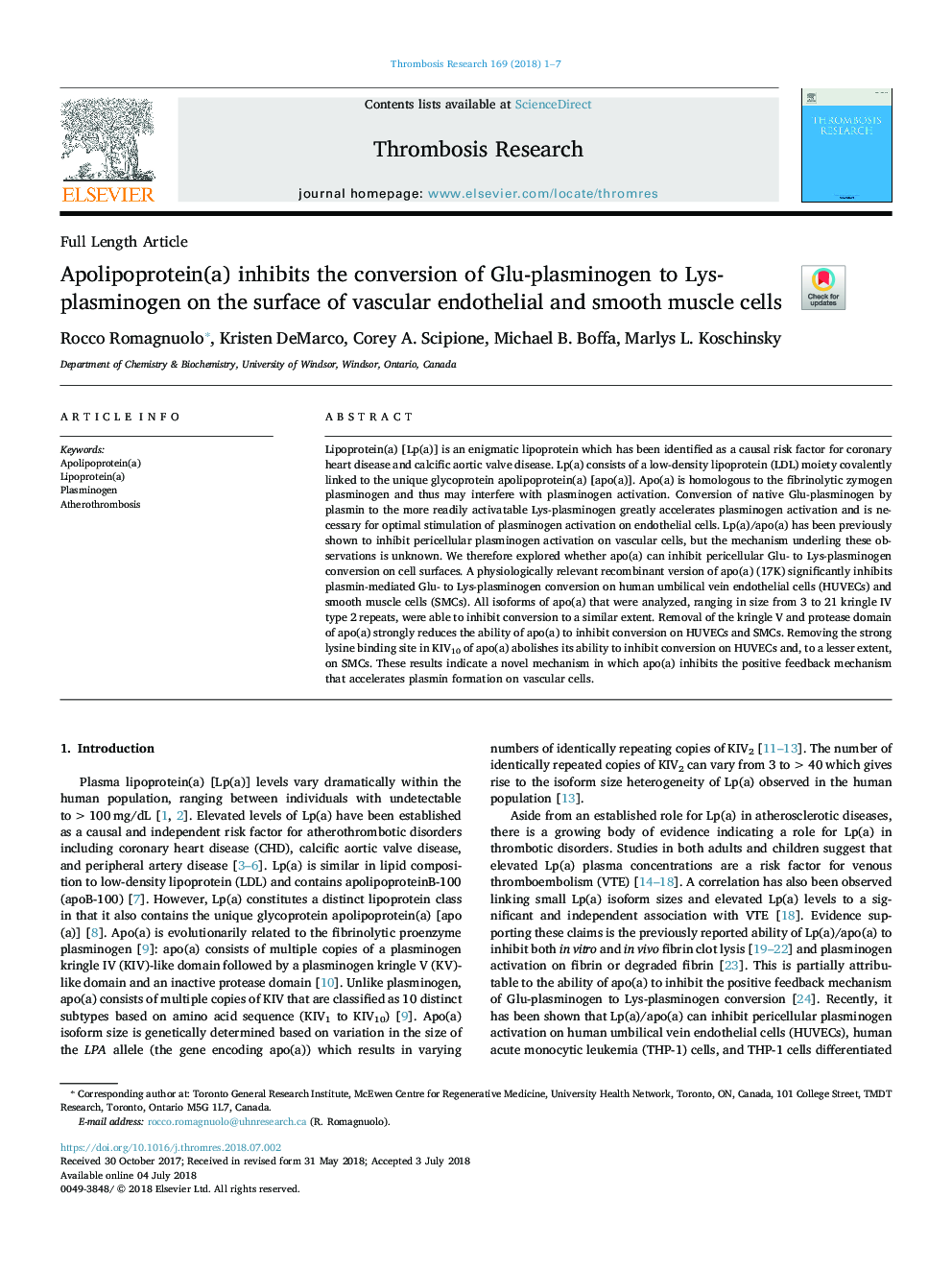| Article ID | Journal | Published Year | Pages | File Type |
|---|---|---|---|---|
| 8679275 | Thrombosis Research | 2018 | 7 Pages |
Abstract
Lipoprotein(a) [Lp(a)] is an enigmatic lipoprotein which has been identified as a causal risk factor for coronary heart disease and calcific aortic valve disease. Lp(a) consists of a low-density lipoprotein (LDL) moiety covalently linked to the unique glycoprotein apolipoprotein(a) [apo(a)]. Apo(a) is homologous to the fibrinolytic zymogen plasminogen and thus may interfere with plasminogen activation. Conversion of native Glu-plasminogen by plasmin to the more readily activatable Lys-plasminogen greatly accelerates plasminogen activation and is necessary for optimal stimulation of plasminogen activation on endothelial cells. Lp(a)/apo(a) has been previously shown to inhibit pericellular plasminogen activation on vascular cells, but the mechanism underling these observations is unknown. We therefore explored whether apo(a) can inhibit pericellular Glu- to Lys-plasminogen conversion on cell surfaces. A physiologically relevant recombinant version of apo(a) (17K) significantly inhibits plasmin-mediated Glu- to Lys-plasminogen conversion on human umbilical vein endothelial cells (HUVECs) and smooth muscle cells (SMCs). All isoforms of apo(a) that were analyzed, ranging in size from 3 to 21 kringle IV type 2 repeats, were able to inhibit conversion to a similar extent. Removal of the kringle V and protease domain of apo(a) strongly reduces the ability of apo(a) to inhibit conversion on HUVECs and SMCs. Removing the strong lysine binding site in KIV10 of apo(a) abolishes its ability to inhibit conversion on HUVECs and, to a lesser extent, on SMCs. These results indicate a novel mechanism in which apo(a) inhibits the positive feedback mechanism that accelerates plasmin formation on vascular cells.
Related Topics
Health Sciences
Medicine and Dentistry
Cardiology and Cardiovascular Medicine
Authors
Rocco Romagnuolo, Kristen DeMarco, Corey A. Scipione, Michael B. Boffa, Marlys L. Koschinsky,
